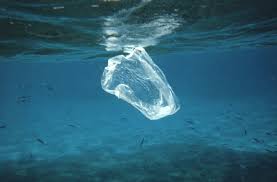Humans have been dumping plastic into the oceans since the 1940s, and the amount of refuse is still accelerating. Oddly, scientists have been somewhat clueless about where all that plastic ends up. One well-known phenomenon is the Great Pacific Garbage Patch, but these types of oddities only account for a small fraction of ocean plastic garbage.
An environmental initiative called Ocean Cleanup has been using a unique method of gathering plastic waste in the ocean with a large U-shaped catcher that is located in the Great Pacific Garbage Patch. The researchers behind this initiative have some new data that suggests where the majority of ocean plastic is going. This new information could help future efforts to mitigate the pollution of the oceans. However, there is some debate about the theories that have been proposed from this new data.
Recent theories about plastic ocean refuse is that it breaks down into “microplastics” that are too small to see with the naked eye, then they either swirl around on the ocean surface or sink to the bottom. Recent studies have found plastic particles thousands of feet below the surface of Monterey Bay and layers of plastic on the California coast dating back to the 1940s.
Researchers at the Ocean Cleanup organization say that they have noticed a pattern of the age of plastic garbage that they find in various ocean locations. They say that plastic garbage along the coasts tends to be less than five years old. This is somewhat obvious due to the visible labels and branding on the garbage. The plastic that they find out at sea tends to be much older, which is evidenced by it’s weathered appearance and lack of contemporary branding.
Ocean Cleanup researchers have compiled data about winds and currents that shows the trail of plastic garbage as it travels down rivers and ends up on ocean coastlines. The garbage sometimes goes off-coast, then returns and collects along the coast. These experts have calculated that only .06 percent of plastic ends up in the large “gyres” of plastic piles out at sea. The plastic that ends up in these oceanic trash piles are decades old, and one researcher found an old Game Boy.









